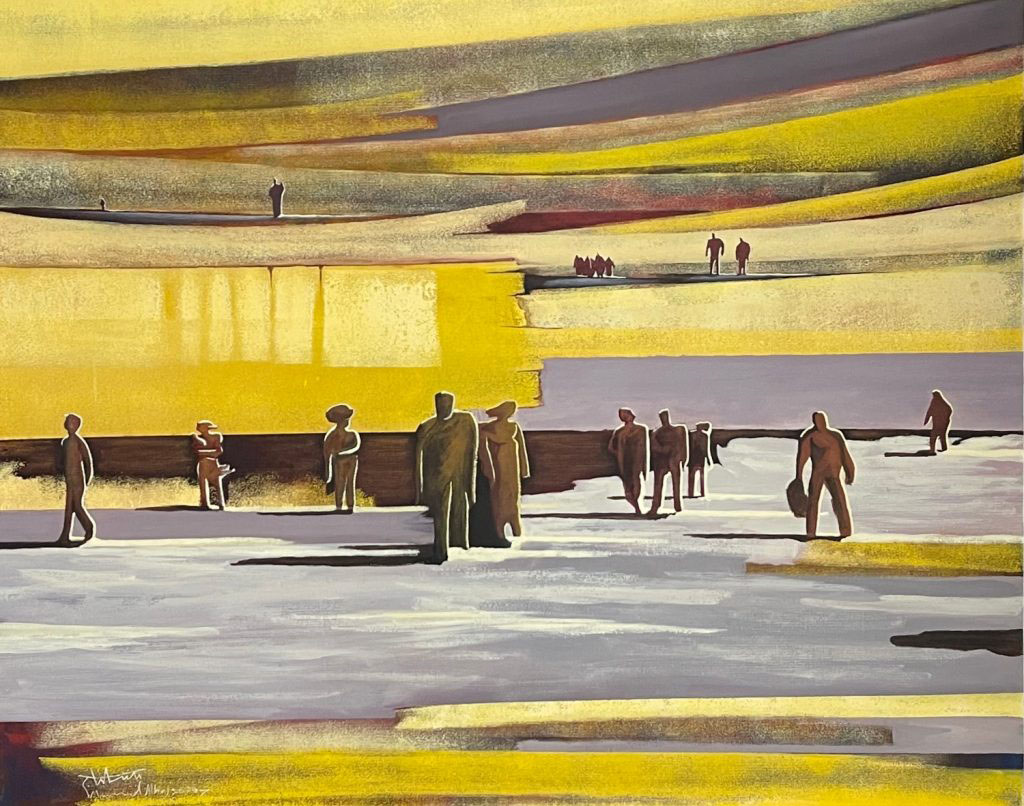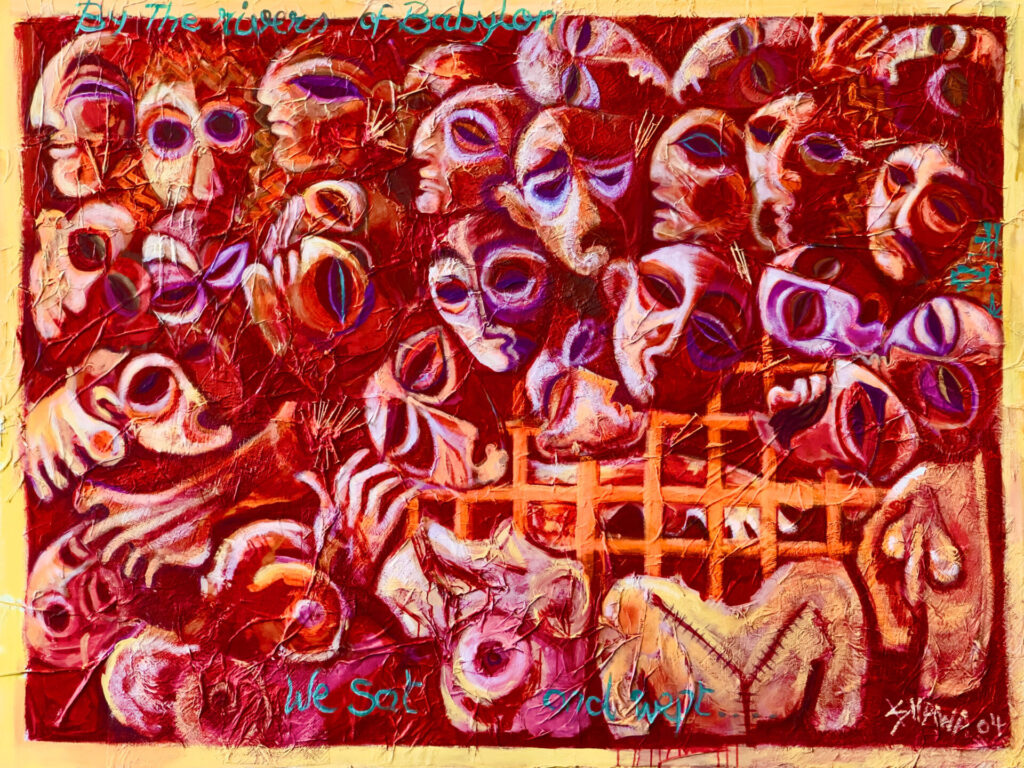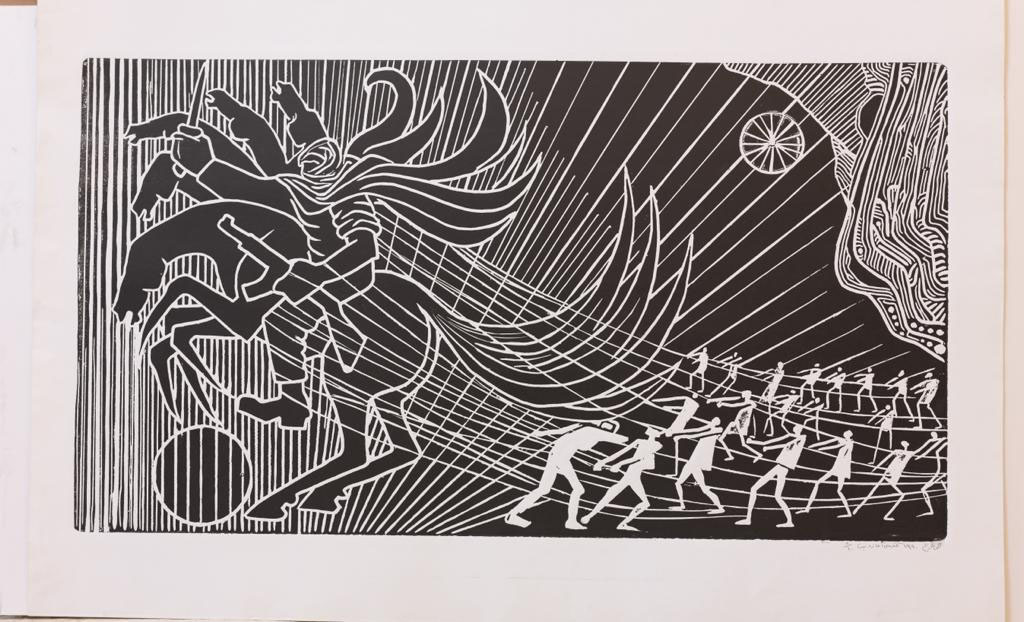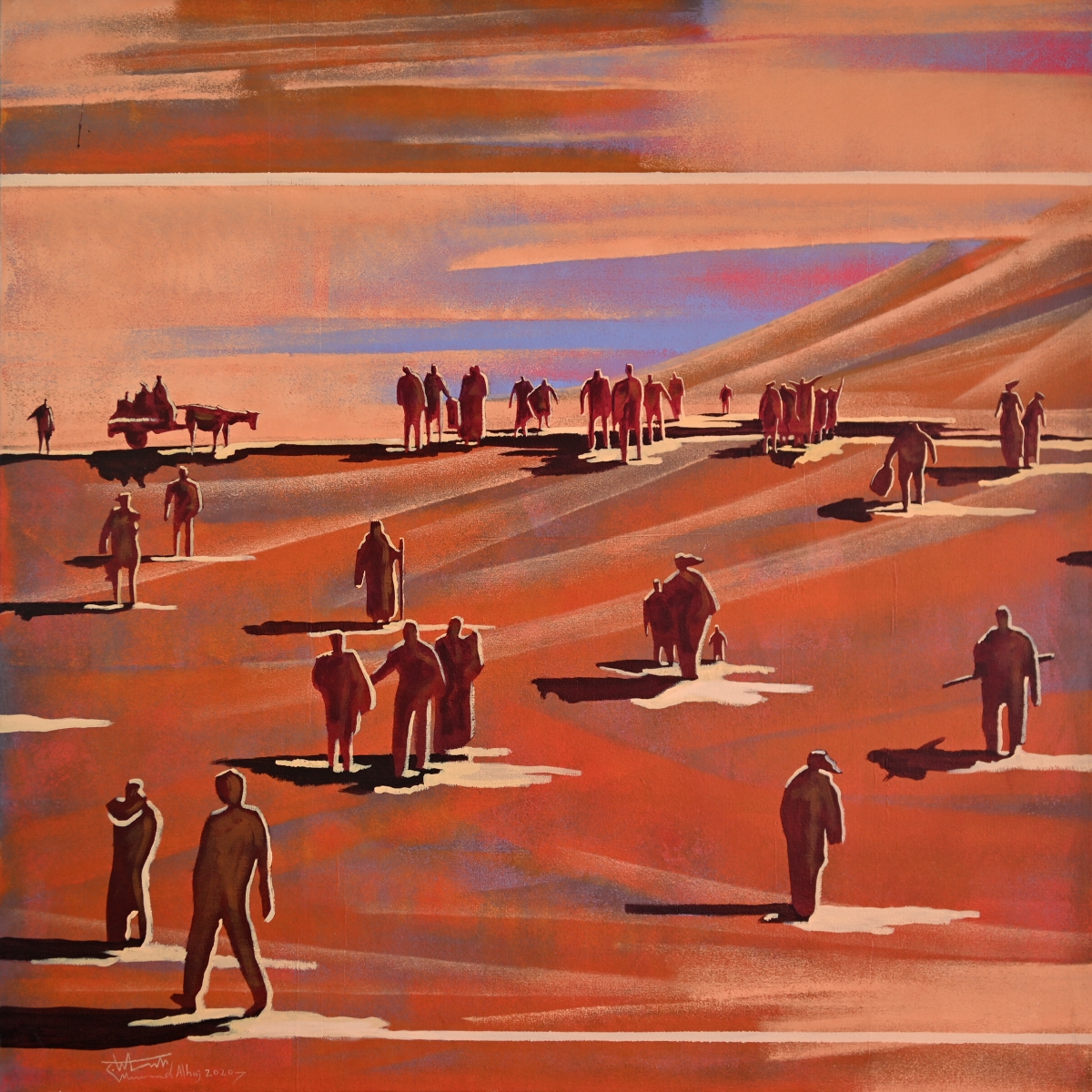Since October 7, 2023, more than ever before, Palestinian and pro-Palestinian writers, artists and academics have been shut down across the spectrum in the United States and Europe. Now a coalition of artists is calling for the Venice Biennale’s Israeli pavilion to be canceled. In fact, Palestine has never had its own pavilion at the Biennale, since Italy does not recognize it as a nation.
Hadani Ditmars
The newly formed Art Not Genocide Alliance has called on the Venice Biennale to shut down the Israel pavilion in the upcoming biennale scheduled for April 20 through November 24, 2024.
ANGA is a collective of international artists, curators, writers, and cultural workers who remain anonymous to protect themselves from attacks by the pro-Israel lobby. The group initiated the petition that now has over 22,000 signatures, which include Nan Goldin, Michael Rakowitz and Tariq Ali, as well as 471 past participants in the Venice Biennale.
Their letter begins, “We, the undersigned, call for the exclusion of Israel from the Venice Biennale. As the art world readies itself to visit the Giardini’s nation-state diorama, we say platforming art representing a state engaged in ongoing atrocities against Palestinians in Gaza is unacceptable. No Genocide Pavilion at the Venice Biennale.”
The letter cites the recent decision by the International Court of Justice, that “Israel is plausibly committing genocide against Palestinians in Gaza,” and its issuing of interim measures warning Israel to cease any acts of genocide in Gaza as fodder for the petition.

The Connecticut-based Palestine Museum US subsequently launched their own petition, citing the Biennale’s rejection of their proposed Collateral Event exhibit featuring 23 indigenous Palestinian artists in Foreigners in Their Homeland. That petition has also gathered over 22,000 signatures, calling for the Biennale to reconsider their decision.
Museum founder and executive director Faisal Saleh, a Palestinian from a refugee family expelled from the village of Salameh near Haifa in 1948 begins the petition by writing, “I am personally invested in ensuring that the voices of Palestinians are heard on international platforms. Recently, the Venice Biennale rejected our proposal for a Collateral Event exhibit featuring 23 Palestinian artists (including some from Gaza) and their 25 works of art for the upcoming Biennale Arte 2024. This exhibit titled Foreigners in Their Homeland was intended to shed light on life under occupation.”
The Biennale’s decision, he says, “not only silences these artists but also perpetuates a single narrative about Israel-Palestine relations. The exclusion of Palestinian voices contributes to an incomplete picture that undermines efforts towards understanding and peace.”

While the Palestinian Museum’s proposal was rejected, and a recent iteration of its 2022 collateral exhibition at the Venice Biennale opened at London’s P21 gallery, a project called “South West Bank: Landworks, Collective Action and Sound” organized by Artists + Allies x Hebron in collaboration with Dar Jacir for Art and Research in Bethlehem is part of the 2024 collateral program. The larger issue is that Palestine has never had its own pavilion at the Biennale, since Italy does not recognize it as a nation. As such, it is only allowed to apply to the official collateral section, which consists of exhibitions and events around the city outside the main Biennale compound that must be approved by the board of the Biennale.
The ANGA letter notes that in 2022, “the Biennale and its curator issued numerous public statements in support of the Ukrainian people’s right to self-determination, freedom, and humanity. The Biennale’s public condemnation of ‘the unacceptable military aggression by Russia’ included an avowal to reject ‘any form of collaboration with those who have carried out or supported such a grievous act of aggression’ and a refusal to ‘accept the presence at any of its events of official delegations, institutions or persons tied in any capacity to the Russian government.’” It also notes South Africa’s ban from the Biennale from 1968 until the official end of apartheid in 1993. “The Biennale has been silent about Israel’s atrocities against Palestinians,” the letter states. “We are appalled by this double standard.”
The ANGA letter criticizes the Israeli “Fertility Pavilion” billed as a reflection on contemporary motherhood, at a time when “Israel has murdered more than 12,000 children and destroyed access to reproductive care and medical facilities. As a result, Palestinian women have C-sections without anaesthetic and give birth in the street.”
The letter also calls out the Israeli pavilion’s curators’ and artists’ “simplistic statement about the necessity of art in dark times” and pleas for a “pocket for free expression and creation amidst everything that’s happening” as another double standard at a time when Palestinian culture is suppressed.
“There is no free expression for the Palestinian poets, artists, and writers murdered, silenced, imprisoned, tortured, and prevented from travelling abroad or internally by Israel,” the letter states. “There is no free expression in the Palestinian theatres and literary festivals shut down by Israel. There is no free expression in the museums, archives, publications, libraries, universities, schools, and homes of Gaza bombed to rubble by Israel.”
Although the Palestine Museum’s letter ends with a call to “foster dialogue through art rather than stifling it,” Saleh says that “The Palestine Museum US acknowledges the call by ANGA to shut down Israel’s Biennale Pavilion in light of the grave charges of genocide in Gaza. While it remains doubtful that the Biennale will comply with this demand, a decisive course of action may need to be taken if our calls are ignored.”
A boycott, he says, by both artists and visitors, “may become the only viable option.”

To demonstrate commitment to the cause, he maintains both letters’ “signatories should contemplate withdrawing from the event (if they are participants) as a genuine display of solidarity with Gaza.”
In response to the petitions, as well as a separate demand from the Women Life Freedom movement calling for Iran to be excluded, a statement from the Biennale was issued February 27th saying: “With regard to the participation in the International Art Exhibition of the countries represented in the pavilions of the Giardini, the Arsenale and in the city of Venice, La Biennale di Venezia would like to specify that all countries recognized by the Italian Republic may autonomously request to participate officially. Consequently, La Biennale may not take into consideration any petition or call to exclude the participation of Israel or Iran in the coming 60th International Art Exhibition (April 20-November 20).”
Saleh warns that the Biennale’s response to the petitions — which continue to grow — calling for a boycott of the Israeli pavilion will result in a “a showdown with thousands of artists around the world hell bent on closing the Israeli pavilion.” In an interview with TMR, he said he “knows for a fact that large scale protests are being organized by Italian youth and labor movements.”
He added, “[Italy’s culture minister Gennaro] Sangiuliano is concerned about what he describes as threats ‘to freedom of thought and expression,’ but has nothing to say about the slaughter of 30,000 civilians and the destruction of cultural and urban infrastructure in Gaza.”
Emphasizing that the call for a boycott is against a pavilion that is the “official representation of the Israeli state, including the military” not a call to “boycott individual Israeli artists,” Saleh cautions that the Israeli government might want to think twice about their decision to participate in the Biennale this year.
“Just think what images people will conjure up as they walk by Israel’s Pavilion: lifeless babies in their pajamas, limbs of whole families sticking out from under the rubble, residential blocks and whole neighborhoods turned into dust, starving people by the thousands roaming the streets looking for water and food for their families. The social media has done a great job showing the results of 5 months of bombing and shooting.”
Meanwhile, the Palestinian Museum US will open their Foreigners in Their Homeland exhibition in Venice as an independent project on April 20th and through November, just half a mile from the Iranian and Israeli pavilions, hosted by the European Cultural Center at Palazzo Mora.
“Artists in Gaza are not only being bombed and starved,” Saleh told TMR, “they are being sidelined and silenced by the Venice Biennale. All the while it is rolling out the red carpet for the Israeli government’s exhibit in its own Pavilion.” Saleh observed that out of 330 works chosen by biennale curator Adriano Pedrosa, none are from Gaza.
As a counterpoint to this exclusion, in addition to 30 Palestinian works from 1990 until 2024 Foreigners in Their Homeland will feature 60 sketches by a single artist in Gaza, drawn during recent IDF bombing.
The exhibition features works by the late great Leila Shawa including her powerful 2004 “Democracy in Red” as well as an original print of Mustafa al-Hallaj’s 1990 Masonite etching, “Deferring Revolution.” It also includes an animated video about checkpoints in the West Bank by Palestinian architect Nisreen Zahda and a painting by Ahed Izheman depicting a couple posing for their wedding photo in front of the looming Separation Wall.
Foreigners in Their Homeland, says Saleh, “is about the brutality of the occupation — and how it permeates all facets of Palestinian life.”




